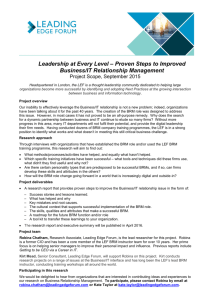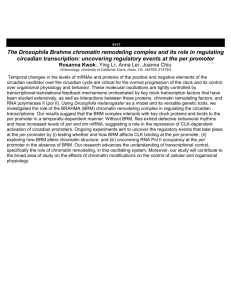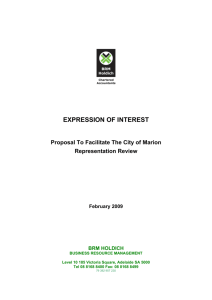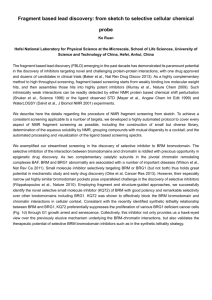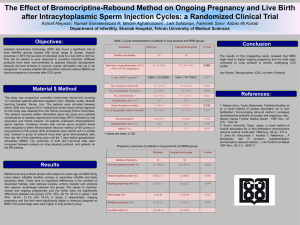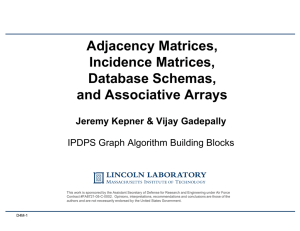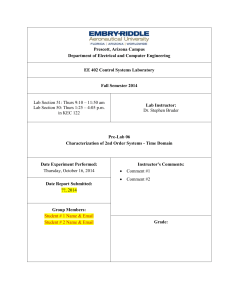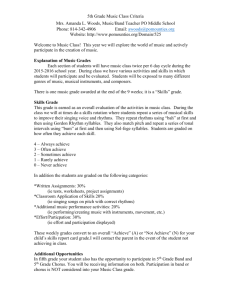Unit 6 - Carnegie Hall
advertisement
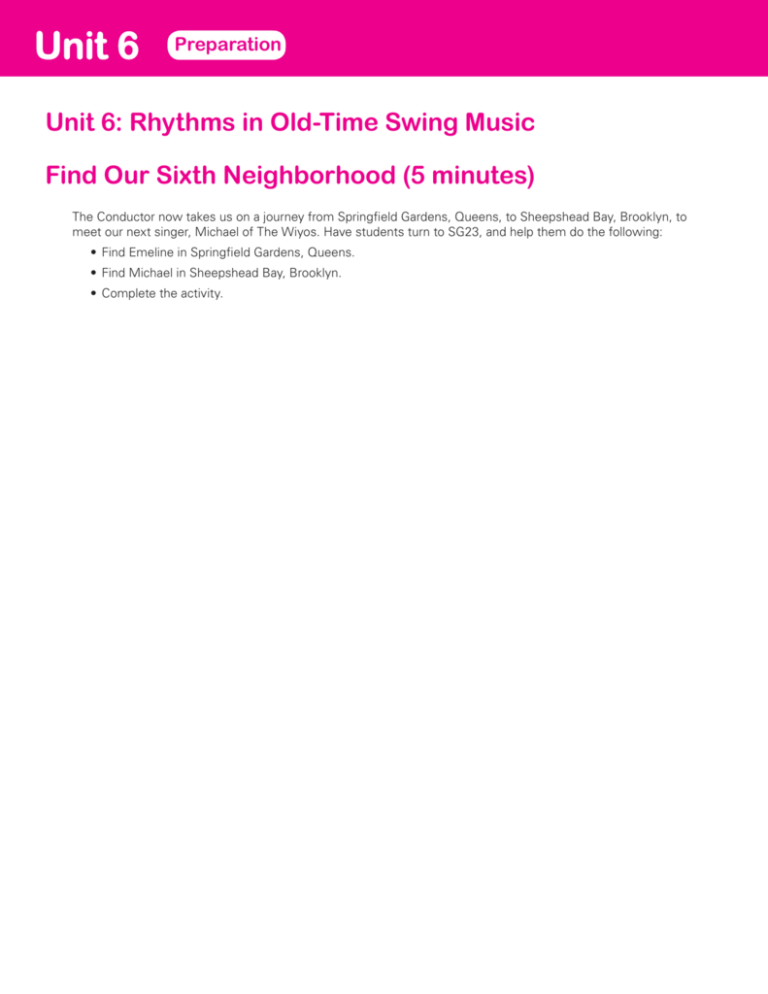
Unit 6 Preparation Unit 6: Rhythms in Old-Time Swing Music Find Our Sixth Neighborhood (5 minutes) The Conductor now takes us on a journey from Springfield Gardens, Queens, to Sheepshead Bay, Brooklyn, to meet our next singer, Michael of The Wiyos. Have students turn to SG23, and help them do the following: • Find Emeline in Springfield Gardens, Queens. • Find Michael in Sheepshead Bay, Brooklyn. • Complete the activity. Unit 6 Lesson 1 SG23 Find Michael’s Neighborhood Find Emeline in Springfield Gardens, Queens. Next, find Michael of The Wiyos in Sheepshead Bay, Brooklyn. Complete the activity to take us from Emeline to Michael. Let’s go! QUEENS MANHATTAN SPRINGFIELD GARDENS Emeline BROOKLYN Emeline is from: Emeline speaks: H­_ I _ I _AI__A_ We learned to sing in rhythmic: C­_ E _ L _ L­_ _ E R _ SHEEPSHEAD BAY Michael 67 Unit 6 Lesson 1 Lesson 1: Learning “Car Song” AIM: What are the rhythms of old-time swing? SUMMARY: Students meet the artists, sing, and create new lyrics for a Woody Guthrie song. MATERIALS: chart paper, markers TIME REQUIRED: 40 minutes STANDARDS: US 1, 2, 3, 4, 6, 7, 9; NYC 1, 2, 3 VOCABULARY: buzz WARM-UP (10 Minutes) • Perform the “Warm-Up Rhyme,” Track 2. • Warm up with the “Sirens,” “Yawning Kittens,” or “Floating Balloon” exercises. , Tracks 3, 4, and 5. • Vocal tip: Remind students to take deep “belly breaths.” • Sing the “Carnegie Hall Musical Explorers Song,” Track 1. MEET MICHAEL OF THE WIYOS (5 Minutes) • Meet Michael of The Wiyos on SG24. SING “CAR SONG” (10 minutes) • Listen to “Car Song,” Track 36. • Have students turn to SG25. • While I read, raise your hand if you hear any words that make car sounds or are about car sounds. • Read the lyrics aloud. • In “Car Song,” The Wiyos use lip buzzing to create the sound of a car chugging down the road. Practice buzzing your lips together. • Sing along with “Car Song,” 68 Tracks 36. Unit 6 Lesson 1 “Car Song” by Woody Guthrie 4 7 10 13 16 19 B7 Brrm, brm, b brm, car, B7 take brm,brm,brm,brm,brm, brm brrm, brm,brm,brm,brm, brrm, brrm, E B7 brrm, brrm rid - in' Me in the car you rid - in' car, Take you in my Brrm brm, brm,brm,brm,brm, brm,brm,brm,brm, brrm. car. b, brrm E b, brrm. B7 Take A E E Brrm, A E Car Song Take me E car. in my rid - in A rid - in car, car, in the I'll Brrm, 69 Unit 6 Lesson 1 CREATE NEW RHYTHMS FOR “CAR SONG” (15 minutes) • Locate My Noisy Old Car, SG26. • What are some of the different parts of this old car? • Which parts seem to be saying something? • Read the text aloud: Our old car makes all kinds of noises whenever we go bumping down the road. The motor, the headlights, the wheels, the starter crank—almost every part makes a different noise. Some are loud, some are soft, some are very unexpected. • Fill in the word bubbles with the sounds that each part of the old car makes when it drives along a bumpy road. Car Song Alternate Lyrics • Play “Car Song” Accompaniment, • Use your old car noises to make new rhythms that go along with the track. If students can perform the sounds in unison, assign the sounds to different small groups and perform antiphonally. For example: take putt click me putt clack Track 37. rid - in chug - ga bock - a - MUSICAL WORD WALL Add the word buzz to the Musical Word Wall. 70 in chug bick - the ga a car pfft HONK! car pfft HONK! Unit 6 Meet Michael! Lesson 1 SG24 The Wiyos Michael Seth Teddy Dear Musical Explorers, Welcome to Brooklyn, where there are people of all stripes and sizes wh o do all kinds of work, and all kinds of pla y. There are great places to see music, with ven ues both big and small. And there are lots of small shops to find all kinds of bric-a-br ac to make music with. Pots and pans! Spoons and tin cups galore! And did I mention harmonicas and cigar box guitars? When I was a kid, I took my uncle Max’s old cigar box and made my first instrument. I added some strings and a sound hole and away I wen t! I look forward to introducing you to my ban dmates, Seth and Teddy, when we come to Ca rnegie Hall. Best, Musical Explorers c/o Carnegie Hall 881 Seventh Avenue New York, NY 10019 Michael 71 SG25 “Car Song” by Woody Guthrie Brrrm Brrrm Brrrm Brrrm brm brm brm brm brm brm brm brm brm brm brm brm brm brm brm brm brm brm brm brm brm, brrrm b’ brrrm, brrrm b’ brrrm, brrrm b’ brrrm, brrrm. Take me riding in the car, car; take me riding in the car, car; Take you riding in the car, car; I’ll take you riding in my car. Click clack, open up the door, girls; click clack, open up the door, boys; Front door, back door, clickety clack, take you riding in my car. Climb, climb, rattle on the front seat; spree I spraddle on the back seat; Turn my key, step on my starter, take you riding in my car. Engine it goes boom, boom; engine it goes boom, boom; Front seat, back seat, boys and girls, take you riding in my car. Trees and the houses walk along; trees and the houses walk along; Truck and a car and a garbage can, take you riding in my car. Ships and the little boats chug along; ships and the little boats chug along; Boom buhbuh boom boom boom buh boom, take you riding in my car. I’m a gonna zoom you home again; I’m a gonna zoom you home again; Boom, boom, buhbuh boom, rolling home, take you riding in my car. I’m a gonna let you blow the horn; I’m a gonna let you blow the horn; A oorah, a oorah, a oogah, oogah, I’ll take you riding in my car. 72 SG26 My Noisy Old Car Our old car makes all kinds of noises whenever we go bumping down the road. The motor, the headlights, the wheels, the starter crank — almost every part makes a different noise. Some are loud, some are soft, some are very unexpected. 73 Unit 6 Lesson 2 Lesson 2: Exploring “Promenade” AIM: What are the rhythms of the American jug band tradition? SUMMARY: Students sing, dance, and explore the rhythms of a traditional two-beat song. MATERIALS: chart paper, markers TIME REQUIRED: 40 minutes STANDARDS: US 1, 2, 6, 8, 9; NYC 1, 2, 3, 5 VOCABULARY: promenade, bass, jug band WARM-UP (10 minutes) • Perform the “Warm-Up Rhyme,” Track 2. • Warm up with the “Sirens,” “Yawning Kittens,” or “Floating Balloon” exercises, Tracks 3, 4, and 5. • Vocal tip: Remind students to take deep “belly breaths.” • Sing the “Carnegie Hall Musical Explorers Song,” Track 1. Promenade boom chuck EXPLORE THE RHYTHMS OF PROMENADE (10 minutes) • Listen to “Promenade” Rhythm Loop Track 38. • Act out and sing the boom-chuck and bass rhythms while the CD plays. 1 boom 1 high 74 and chuck Bass Promenade 2 and 3 and boom 2 low chuck boom 3 high chuck 4 boom 4 low and chuck Unit 6 Lesson 2 • Divide the class into “boom-chucks” and “basses”; designate separate but adjacent areas on the floor (example: on the rug, off the rug) for the two instruments to perform in; and invent ways of soloing or combining students’ mimed and sung performances of the instruments. For example: • Basses only • Boom-chucks only • Both together with the recording • Both together without the recording • Switch instruments • Playing slower or faster EXPLORE “PROMENADE” (10 Minutes) • Listen to “Promenade,” Track 39. • Dance a promenade to “Promenade,” Track 39. Basic promenade position: • Partners standing side by side • One arm around each other’s waist • The other arm in front of tummy, holding hands Simple promenade dance: • Two little steps forward, leaning forward • Two little step backwards, leaning backwards EXPLORE JUG BAND MUSIC (10 Minutes) The Wiyos are inspired by American jug band music. What is a jug band? • Locate What’s in a Jug Band, SG27. • A jug band is a band with at least one jug player and a mix of traditional and home-made instruments, ordinary objects like the washtub bass, washboard, spoons, stovepipe, or comb and tissue paper kazoo. Jug band guitars and mandolins were sometimes made from the necks of discarded guitars fastened to large gourds. Early jug bands were typically made up of African American vaudeville and medicine show musicians. They played a mixture of blues, ragtime, and jazz music. • Instruct students to label the jug-band instruments shown in the pictures, using words from the Jug Band Word Bank. 75 Unit 6 Lesson 2 CREATIVE EXTENSION (30 Minutes) SUMMARY: Students learn other types of promenade dances. • Locate a movement specialist or experienced dancer to teach your class how to do the dances that appear in the “Promenade” lyric: Jitterbug, Charleston, and Lindy Hop. If you don’t have a movement specialist but want to give the dances a try, try searching for them online. MUSICAL EXTENSION (20 Minutes) SUMMARY: Students make their own jug band orchestra. • Collect sound-making objects to create an old-time jug band to play along with The Wiyos’ songs. Take inspiration from what you see in the jug band pictures. You might use a plastic jug or two-liter soda bottle, a wash-tub or cardboard-box bass, a kazoo, a comb covered with wax paper, two spoons (played as percussion instruments by holding them by the handles and bowl to bowl in one hand while slapping them back and forth between your thigh and other hand), a washboard or anything with ridges, pots and pans, and wooden spoons. MUSICAL WORD WALL Add the words promenade, bass, and jug band to the Musical Word Wall. SG27 What’s in a Jug Band? Jug Band Word Bank jug kazoo harmonica washboard banjo guitar ukulele cigar-box guitar 77
